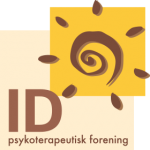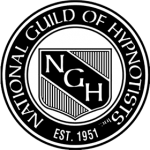Hypnosis & Therapy centrally located in Copenhagen
professional help for positive change
Hypnosis & Talk Therapy in Copenhagen-
v/ Certified
Hypnotherapist, Psychotherapist MPF, Jan Petry
Treatment under hypnosis aims to work directly with the subconscious and unconscious mind, thereby influencing emotions, thoughts, and behavior. Much of our behavior as humans occurs without conscious thought and is guided by our subconscious and unconscious minds.
Hypnosis is a powerful tool that is especially useful for getting to the root of issues in an effective way. It is a straightforward method to open up the possibility of letting go of phobias, anxiety, stress, old habits, and more.
It is, therefore, an effective therapeutic tool that can help you gain awareness of yourself and your reaction patterns, allowing you to let go of unhelpful habits and behaviors.
Hypnosis can be seen as a tool in therapeutic work and is never used alone. Hence the term hypnotherapist.
In certain cases, talk therapy is preferable to hypnosis, and I recommend this treatment for clients whom I assess to have such a need.
When the focus is on understanding and thereby changing thought and behavior patterns that are experienced as obstacles in life, cognitive therapy, for example, is an effective form of treatment.
In addition to hypnosis and cognitive therapy, I am trained in and have worked with behavioral, systemic, psychodynamic, existential, spiritual, and humanistic therapy.
Through talk therapy and hypnotherapy, I have helped my clients over the years with difficult emotional challenges—from depression and stress to phobias and anxiety.
Therapy & Hypnosis in Copenhagen
Because my clinic is located in the heart of Copenhagen K, it is easy for you to reach, whether you are from Copenhagen or nearby towns.
If you have any questions about my treatments or about hypnosis, feel free to contact me.
CLICK HERE TO ACCESS A 9-MINUTE RELAXATION AUDIO FILE.
The history of hypnosis goes far back in time, with the earliest signs of hypnosis traceable to ancient China and Egypt, where there are references to similar techniques used to relieve pain and improve physical health.
Nearly all ancient cultures, including the Sumerian, Persian, Chinese, Indian, Egyptian, Greek, and Roman, utilized hypnosis in some form. In Egypt and Greece, the sick would often travel to healing sites known as sleep temples or dream temples to be healed through hypnosis.
In the 19th century, the scientific study of hypnosis began to take shape, thanks to the French doctor Jean-Martin Charcot, who examined the effects of hypnosis on neurological disorders. Another notable figure in hypnosis was the American doctor James Braid, who studied hypnosis for pain management and developed a technique known as “hypnotic awakening.”
The Power of Hypnotic Suggestion – Faria, Liébeault, Bernheim, and the Nancy School.
In 1813, an Indo-Portuguese priest named Abbé Faria conducted hypnosis studies in India and later returned to Paris to study hypnosis with Puysegur. Faria proposed that it was not magnetism or the hypnotist’s power responsible for the trance and healing, but rather the power held by the hypnotized subject themselves.
Faria’s approach laid the foundation for the clinical and theoretical work of the French Nancy School, also known as the School of Suggestion. The Nancy School argued that hypnosis was a normal phenomenon induced by hypnotic suggestion rather than the result of magnetism. The Nancy School was founded by Ambroise-Auguste Liébeault, a French country doctor considered the father of modern hypnotherapy. He studied the similarities between sleep and trance, viewing hypnosis as a state that could be produced by hypnotic suggestion.
Bernheim (1840–1919), a well-known neurologist, was initially skeptical of Liébeault, but after observing him, he was so impressed that he left his medical practice to become a hypnotherapist. Liébeault and Bernheim are innovators of modern psychotherapy.
During the 20th century, hypnosis was also used therapeutically, with American psychologist Milton Erickson making significant contributions by developing a form of hypnosis aimed at enhancing patients’ self-esteem and self-worth.
In the 20th century, hypnosis expanded beyond medicine into areas such as therapy and hypnotic entertainment. It was also used as a tool to help people change bad habits and overcome phobias.
Today, hypnosis is a well-known and recognized treatment option within psychology and healthcare, used for a range of purposes, including pain relief, confidence building, and reducing stress and anxiety.
Although the history of hypnosis dates back a long way, it is still an area being explored and understood in new ways, and it is expected to become an increasingly important part of modern medicine and therapy in the future.
Today, hypnosis is used in many places, including certain hospitals, by doctors, dentists, psychologists, psychotherapists, and hypnotherapists, either as a supplement to other treatments or as a standalone treatment.






